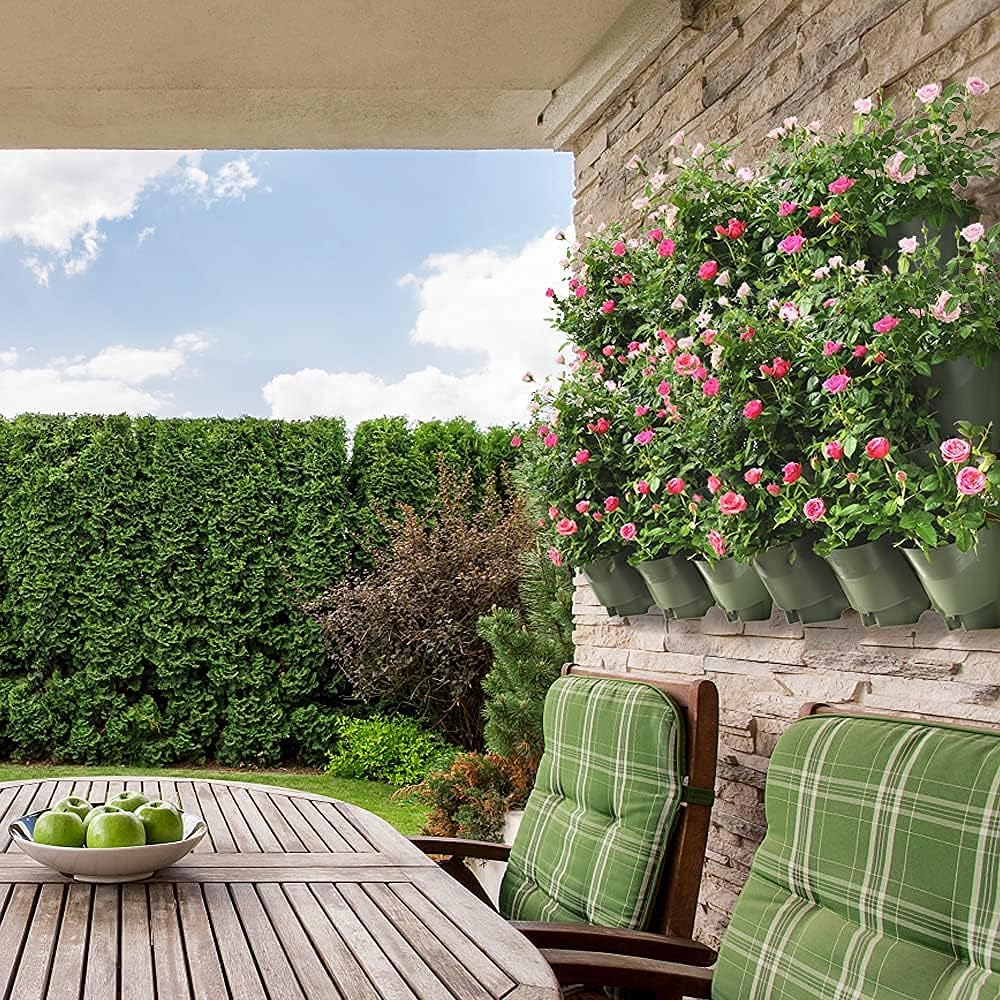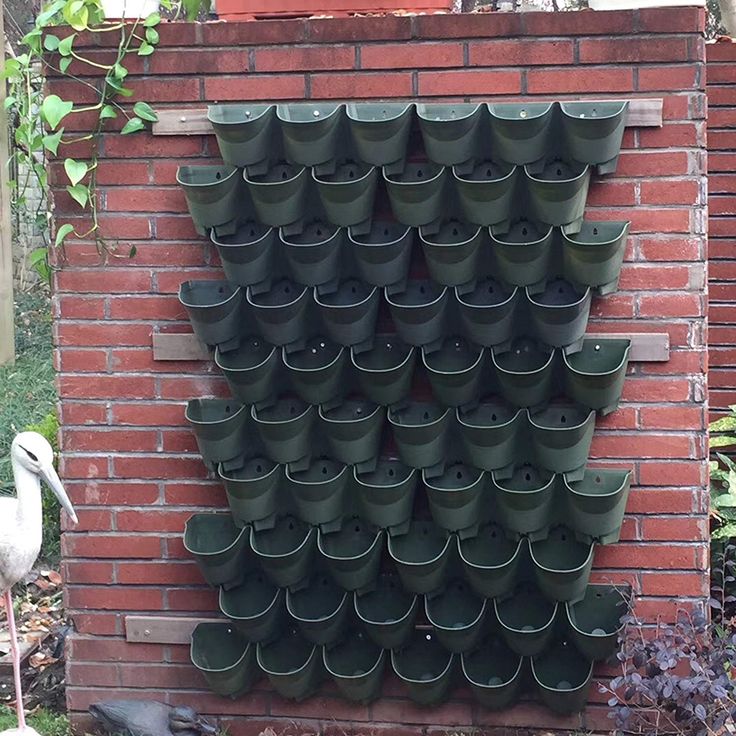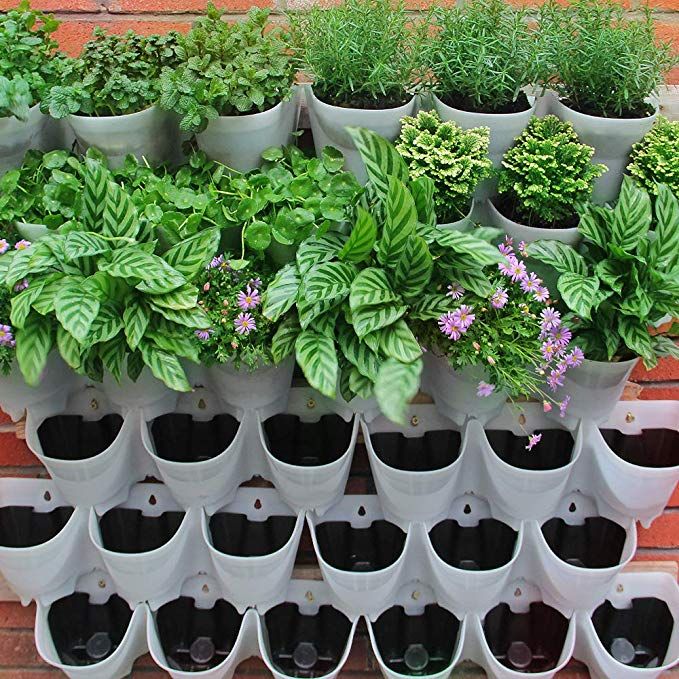Contents
- 1 Discovering Water Efficiency in Vertical Gardening
- 2 The Magic of Self-Watering Garden Walls
- 3 Setting Up Your Self-Watering Garden Wall
- 4 Planting Strategies for Self-Watering Walls
- 5 Maintenance Tips for a Thriving Vertical Garden
- 6 Top Picks for Self-Watering Garden Walls
- 7 Frequently Asked Questions (FAQs)
- 8 Author
Article-at-a-Glance
-
Self-watering garden walls save time and conserve water while keeping plants hydrated.
-
Understanding the system’s mechanics helps you choose the best option for your space.
-
Tools and step-by-step instructions make installation manageable, even for beginners.
-
Plant selection and arrangement are key to a beautiful and functional vertical garden.
-
Maintenance is minimal, ensuring your garden wall thrives with little effort.
Discovering Water Efficiency in Vertical Gardening

Gardening is a joy and a journey. As we dive into the world of vertical gardens, we unlock a new dimension of space-saving greenery. But here’s the clincher: maintaining a lush, vertical oasis can be daunting. That’s where self-watering garden walls come in – they’re a game-changer for plant lovers everywhere. Let’s embark on a journey to understand how these ingenious systems can transform your gardening experience, making it more enjoyable and sustainable.
Why Vertical Gardens Love Self-Watering Systems
Vertical gardens are not just stunning to look at; they’re also incredibly space-efficient. But, they come with their own set of challenges. Traditional watering can be uneven and time-consuming, especially for those living a busy lifestyle. Here’s the good news: self-watering systems ensure that your plants get the exact amount of water they need, directly to their roots, with minimal effort from you. It’s like having a personal plant-sitter that never forgets to water your green friends.
Top Benefits of Self-Watering Wall Systems
Imagine a world where you don’t have to worry about under-watering or over-watering your plants. Self-watering wall systems are not just convenient; they come with a plethora of benefits:
-
Time-saving: Fill up the reservoir and let the system do the rest. This means more time for you to enjoy your garden rather than laboring over it.
-
Water conservation: These systems use water efficiently, reducing waste and saving on your utility bills.
-
Healthier plants: Consistent moisture levels mean healthier plants and more vibrant blooms.
-
Less frequent watering: Depending on the system and plant types, you might only need to refill the water reservoir every few weeks.
-
Adaptability: Self-watering garden walls can be used indoors or outdoors, making them versatile for any living situation.
The Magic of Self-Watering Garden Walls

So, how do these marvels of modern gardening actually work? It’s simpler than you might think. A self-watering garden wall is a layered system. At the top, there’s a reservoir where water is stored. This water gradually wicks down to the plants below, providing a steady supply of moisture. Roots take up water as needed, which promotes strong, healthy growth. The result? A lush, self-sustaining vertical garden that practically takes care of itself.
How These Systems Work
The key to the magic is capillary action. This is the ability of water to move through a medium, such as soil or a special fabric, against gravity. In self-watering systems, this principle ensures that water travels from the reservoir to the roots of your plants. It’s a closed-loop system, so there’s no runoff and no water waste. Plus, it mimics the natural way plants absorb water in the wild – slow, steady, and from the ground up.
Choosing the Right System for Your Green Space
Before you rush off to get your self-watering garden wall, take a moment to consider your space and needs. Ask yourself:
-
How much space do I have available for a vertical garden?
-
What type of plants do I want to grow?
-
Do I prefer an indoor or outdoor setup?
-
What’s my budget?
Your answers will guide you to the perfect self-watering system for your garden. Whether it’s a compact indoor unit for your kitchen herbs or a sprawling outdoor wall for a variety of flowers and ferns, there’s a self-watering solution out there for you.
Setting Up Your Self-Watering Garden Wall

Alright, you’ve picked out the perfect self-watering garden wall system, and you’re ready to roll up your sleeves and get to work. Installing these systems is straightforward, and I’ll guide you through it. First, gather all the necessary tools and materials. You’ll need your garden wall kit, a drill if you’re mounting it to a wall, a level, a water source, and, of course, your plants and potting mix.
Tools and Materials You’ll Need
Here’s a quick checklist to ensure you have everything you need:
-
Self-watering garden wall kit
-
Power drill and appropriate drill bits
-
Wall anchors and screws (usually provided with the kit)
-
Spirit level
-
Water supply (like a hose or watering can)
-
High-quality potting mix
-
Your chosen plants
Step-by-Step Installation Guide
Now, let’s get that garden wall up and thriving. Follow these steps:
-
Choose a location for your wall. If it’s outdoors, make sure it’s sheltered from harsh winds. If it’s indoors, find a spot with adequate light.
-
Use the level to mark where you’ll mount the wall. It’s crucial to get this right, so take your time!
-
Drill holes and insert the wall anchors. This will provide a secure hold for your garden wall.
-
Attach the wall brackets or panels as per the instructions in your kit.
-
Fill the planters with potting mix and plant your seeds or seedlings.
-
Attach the planters to the brackets or panels.
-
Fill the water reservoir, and let the system take it from there!
And voilà, you’ve got yourself a self-watering garden wall! It’s almost like magic, watching your plants grow with such ease.
Planting Strategies for Self-Watering Walls

With your garden wall installed, it’s time to think about what you’ll grow. The beauty of these systems is their versatility. You can plant herbs, flowers, succulents, or even small vegetables. The key is choosing plants that will thrive in your particular environment.
Selecting Plants for Your Vertical Garden
When selecting plants, consider the following:
-
Light requirements: Match your plants to the amount of sunlight your garden wall receives.
-
Water needs: While the self-watering system manages moisture levels, some plants prefer drier conditions than others.
-
Growth habits: Look for plants that grow well in confined spaces and won’t overrun their neighbors.
Herbs like basil, mint, and parsley are great starters for an edible wall. For a pop of color, try marigolds or petunias. If you’re into succulents, go for aloe or echeveria.
Arrangement Tips for Aesthetics and Growth
Besides that, think about how you arrange your plants. Here are a few tips:
-
Place taller plants at the top so they don’t shade out the others.
-
Group plants with similar light and water needs together.
-
Use color and texture to create visual interest. Contrast is key!
Remember, a well-planned arrangement is both beautiful and functional, allowing all your plants to thrive. For an innovative approach to vertical gardening, consider exploring self-watering wall planters that can add ease to maintaining your garden wall.
Maintenance Tips for a Thriving Vertical Garden

Maintenance is a breeze with self-watering garden walls. However, there are a few things you’ll want to keep an eye on to ensure your plants are living their best life.
Firstly, check the water level regularly. Even though the system is self-watering, you still need to refill the reservoir from time to time. Secondly, keep an eye on plant growth. Prune as needed to maintain shape and encourage new growth. Lastly, watch for signs of pests or disease and address them promptly.
Regular Check-Ups for Optimal Performance
Most importantly, perform regular check-ups. Here’s what to look for:
-
Moisture levels in the soil: Not too wet, not too dry.
-
Leaf health: Yellowing or dropping leaves can indicate a problem.
-
Root health: If you notice roots poking out of the planter, it may be time to repot or prune.
Solving Common Issues with Self-Watering Systems
Even the best systems can run into issues. Here’s how to tackle common problems:
-
If water isn’t wicking properly, check for blockages in the wicking material.
-
Algae growth in the water reservoir can be prevented by cleaning it out regularly and avoiding direct sunlight.
-
Overwatering can occur if the reservoir is too full. Monitor water levels closely, especially after heavy rain if your wall is outdoors.
With these tips, you’ll keep your vertical garden looking lush and healthy all year round.
Top Picks for Self-Watering Garden Walls

While the Worth Garden 36 Pockets Vertical Planter is a fantastic choice, it’s not the only player in the game. There are other self-watering systems that might catch your eye. For instance, the Glowpear Urban Garden Self-Watering Wall Planter offers a sleek, modern look and is ideal for urban dwellers with limited space. There’s also the Lechuza Cascada Stackable Vertical Planter, which boasts a sophisticated European design and is perfect for growing strawberries or herbs. These options and more are available, each with unique features that cater to different gardening needs and aesthetics.
Frequently Asked Questions (FAQs)

Now, let’s tackle some frequently asked questions to clear up any lingering curiosities you may have about self-watering garden walls.
Can Self-Watering Systems Be Used for All Types of Plants?
Absolutely! Self-watering systems are quite versatile and can be used for a wide range of plants. Whether you’re looking to grow herbs, vegetables, ornamental flowers, or even succulents, there’s a way to adjust the system to meet the needs of your greenery. However, always check the water requirements for your specific plants, as some may prefer drier conditions.
For example, succulents and cacti require less water than other plants, so you might need to adjust the frequency of refills accordingly. On the other hand, moisture-loving plants like ferns will thrive in the consistently damp environment that self-watering systems provide.
How Often Do I Need to Refill the Water Reservoir?
The frequency of refills will depend on several factors, including the type of plants you’re growing, the size of the reservoir, the climate, and the time of year. During hot summer months, you may need to refill the reservoir more frequently than during cooler seasons. A good rule of thumb is to check the water level weekly and top up as needed.
Many self-watering planters come with a water level indicator, which makes it easy to see when it’s time to add more water. This is a simple yet effective way to ensure your plants always have the moisture they need to flourish.
Are Self-Watering Garden Walls Suitable for Outdoor Use?
Yes, many self-watering garden walls are designed to withstand outdoor conditions. They’re made from durable materials that can handle the elements, whether it’s intense sun, rain, or even frost. However, it’s important to choose a system that specifies outdoor use to ensure longevity and proper function.
Can I Install a Self-Watering System on an Existing Wall?
Installing a self-watering system on an existing wall is definitely possible, and it can be a great way to add greenery to your space without taking up floor area. You’ll need to ensure the wall can support the weight of the system when it’s filled with water and plants. Additionally, you may need to add a waterproof backing to protect the wall from moisture damage.
Before you start drilling, plan out the placement of your self-watering wall planters carefully. Use a level to make sure they’re straight, and always follow the manufacturer’s instructions for secure installation.
If you’re not confident about doing it yourself, don’t hesitate to call in a professional. It’s better to be safe than sorry, especially when it comes to your walls and your plants.
For example, Jane from Colorado successfully installed a self-watering garden wall on the exterior of her home. She chose a system specifically designed for outdoor use and hired a local handyman to ensure it was mounted securely. Now, her once bland wall is a vibrant display of cascading flowers that require minimal maintenance.
What Is the Lifespan of a Self-Watering Garden Wall System?
The lifespan of a self-watering garden wall system can vary based on the quality of the materials, the conditions it’s exposed to, and how well it’s maintained. Generally, you can expect a well-made system to last several years. Some systems even come with warranties or guarantees that can give you an idea of their expected lifespan.
To maximize the longevity of your system, perform regular cleanings to prevent clogs and algae growth, and inspect it for any signs of wear and tear. Replacing parts as needed can also help extend the life of your garden wall.
Remember, investing in a higher-quality system from the get-go can save you money and hassle in the long run. Quality materials and construction make all the difference in durability and performance.
As urban spaces become more compact, many garden enthusiasts are turning to vertical gardening to make the most of their limited space. Vertical gardens are not only space-efficient but also add a unique aesthetic to any urban dwelling. With the rise of innovative gardening solutions, self-watering systems have become increasingly popular among those looking to maintain lush garden walls without the constant upkeep. These systems ensure that plants receive the optimal amount of water, reducing waste and saving time for the gardener.




Leave a Reply